
Many owners, particularly newbies, are unsure whether reptiles can live in a 55-gallon
Even though hatchlings and juvenile reptiles require smaller tanks, you should consider a more sizable type for adults in advance. It is necessary to provide a terrarium of at least 55 gallons (210 l) for a Bearded Dragon, Blue Tongued Skink, Ball Python, Panther Chameleon, and some snakes.
This article aims to show you how to make your reptile happy and satisfied in an average-sized
Table of Contents
What Reptiles Can I Keep In A 55-Gallon Tank ?
You can keep many reptile species in a
| Reptile type | Tank size for adults | Tank size for hatchlings and juveniles |
| Bearded Dragon | 55 to 120 gallons (210 – 455 l) | 20 to 40 gallons (75 – 150 l) |
| Blue Tongued Skink | 55 to 70 gallons (210 – 265 l) | 20 gallons (75 l) |
| Ball Python | 55 gallons (210 l) | 10 to 40 gallons (40 – 150 l) |
| Corn Snake | 55 gallons (210 l) | 10 to 30 gallons (40 – 115 l) |
| Pair of Collared lizards | 55 to 75 gallons (210 – 285 l) | 40 gallons (150 l) for ten hatchlings |
| African Fire Skink | 50 to 55 gallons (190 – 210 l) | 20 gallons (75 l) |
| Panther Chameleon | 40 to 55 gallons (150 – 210 l) | 10 gallons (40 l) |
| California Kingsnake | 40 to 55 gallons (150 – 210 l) | 10 to 20 gallons (40 – 75 l) |
| Hognose Snake | 40 to 55 gallons (150 – 210 l) | 10 to 20 gallons (40 – 75 l) |
On the other hand, a confined and tight
Let’s take a look at species that perfectly fit a 55-gallon
1. A pair of Collared Lizards (Crotaphytus collaris)
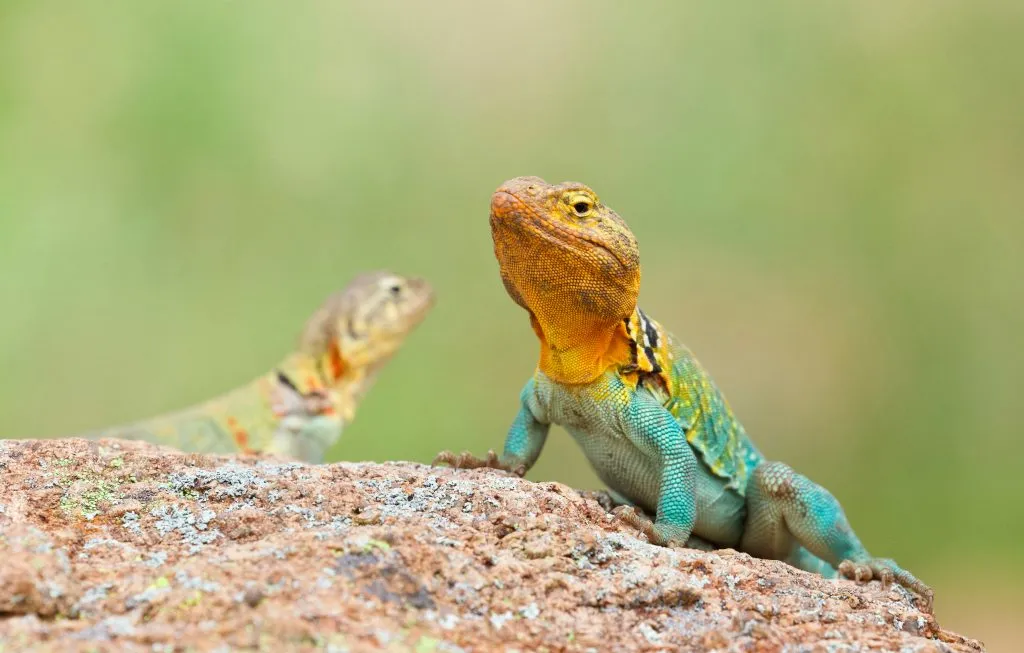
You can keep up to ten Collared Lizards’ hatchlings in a 40-gallon terrarium, but you should separate them when mature to prevent hostility.
One reptile will be happy with a
This 8 to 12 inches (20 – 31 cm) long lizard is very active, so you should be careful when choosing a terrarium.
Typically, it will use any extra space, even in a more sizable
2. Fire Skink (Mochlus fernandi)
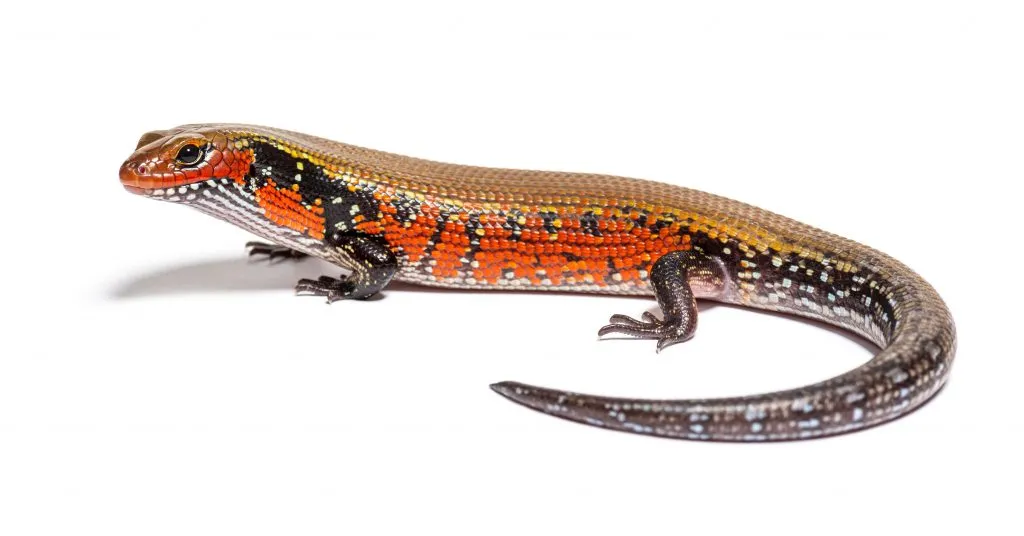
These beautiful reptiles with orange, red, brown, and black scales are still rare on the market, but you can expect them to become popular soon.
Since they are highly active, you should provide a
Once these burrowing lizards reach their full length of 15 inches (38 cm), they will require more space. Therefore, you should purchase a wide
3. Male Panther Chameleon (Furcifer pardalis)
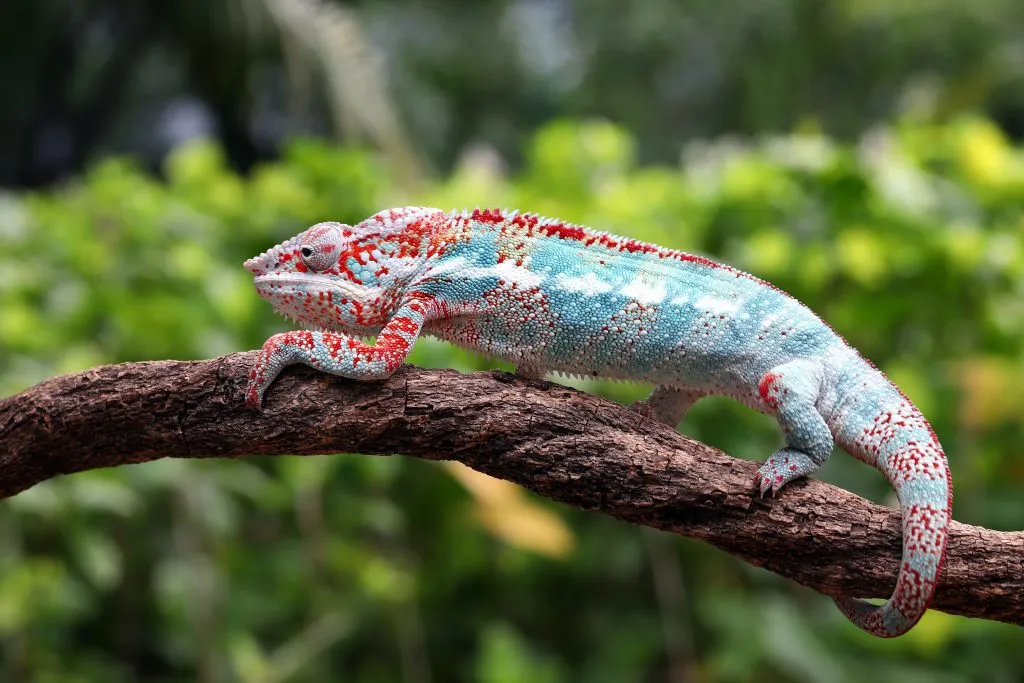
Your Panther Chameleon will be happy in a spacious enclosure, but it sometimes depends on each individual. It will be enough to provide a 10-gallon
On the other hand, juveniles and female chameleons typically require one of 40 gallons. Since males need a more sizable space, a 36 inches (91.50 cm) tall vertical terrarium of 55 gallons will be a perfect solution for them. The required base is 18 by 18 inches (46 x 46 cm).
Would you like to get a panther chameleon? Read our panther chameleon care guide for more info on these awesome chameleons!
4. California Kingsnake (Lampropeltis californiae)
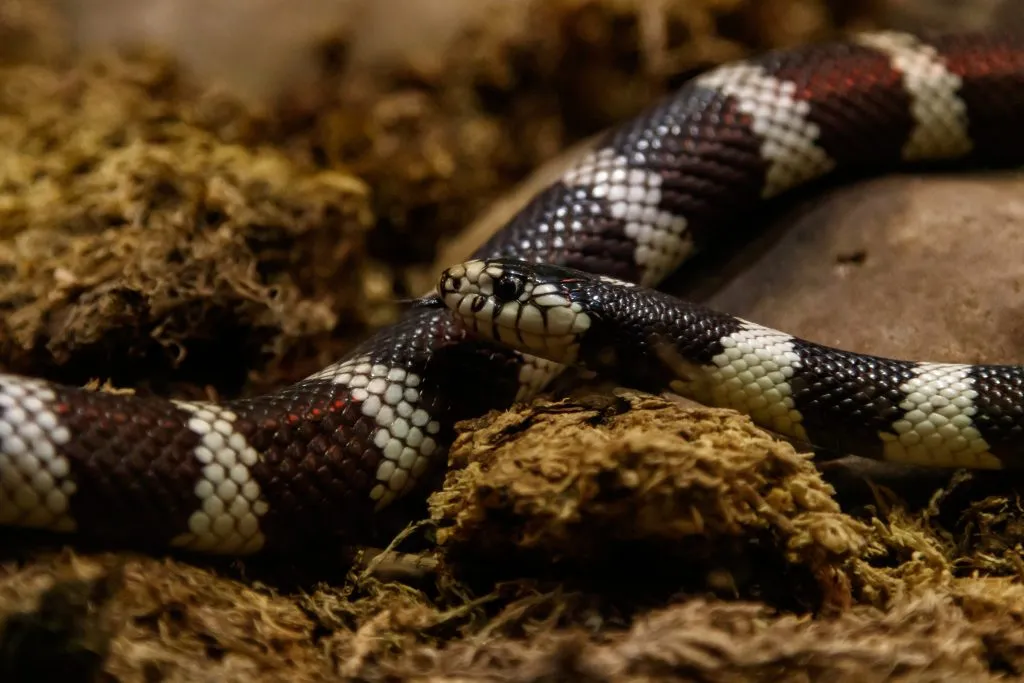
A terrarium of 10 to 20 gallons is a perfect home for California Kingsnake hatchlings and juveniles, but you should provide one of 40 gallons once they grow up.
However, many owners recommend a horizontal 55-gallon
5. Hognose Snake (Heterodon nasicus)
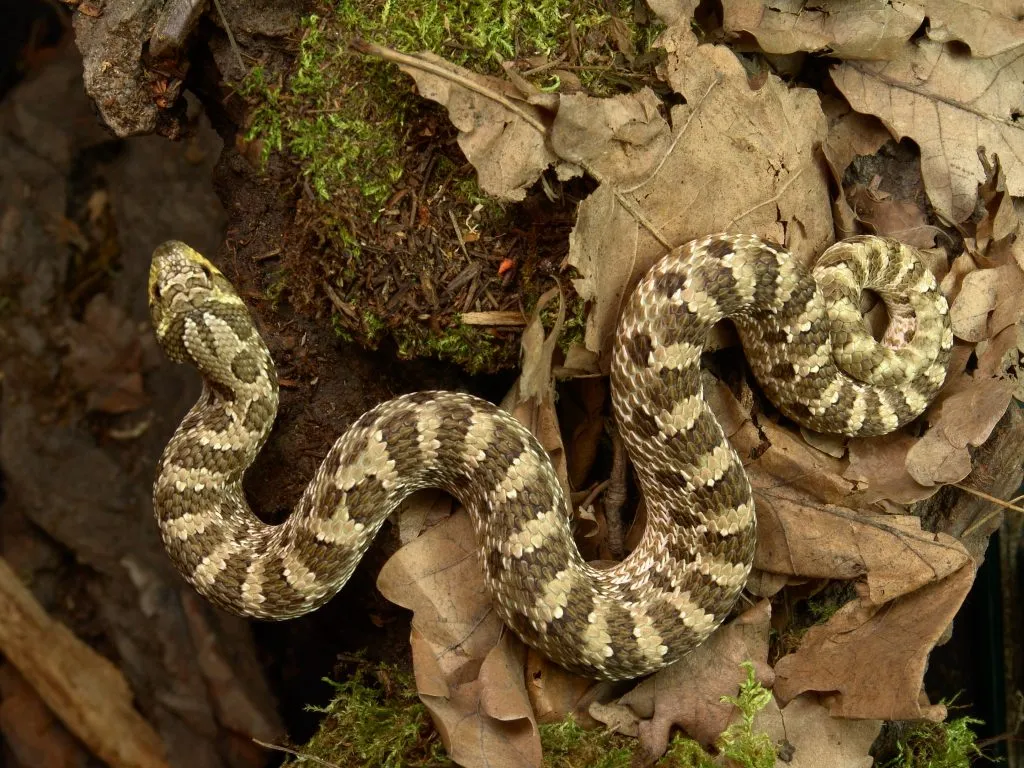
A typical Hognose Snake requires at least 1 square foot (0.09 m2) of space per 1 foot (0.3 m) of its length. Therefore, your hatchling will be happy with a small 5-gallon terrarium.
However, buying one of 10 to 20 gallons for your juveniles or adult male Westerns is necessary. Since adult Western females and Eastern males and females prefer more sizable space, it is wise to consider a wide
If you are interested in getting a hognose snake, read our hognose snake care guide here!
If you are interested in other
tank sizes and are unsure about the best options for your pet, you can look at our articles on reptiles for other terrarium sizes:
- The 5 best reptiles for 5-Gallon tanks
- 9 reptiles that can live in a 10-gallon tank
- Have a 20-gallon tank? These 9 reptiles can live in it!
- 14 reptiles for 30-gallon tanks
- 6 amazing reptiles for 40-gallon tanks
- 8 Awesome Reptiles For 75-gallon tanks
- 12 reptiles that are perfect for 100-gallon tanks
- 9 Reptiles Perfect For 120-Gallon Tanks
6. Bearded Dragon (Pogona vitticeps)
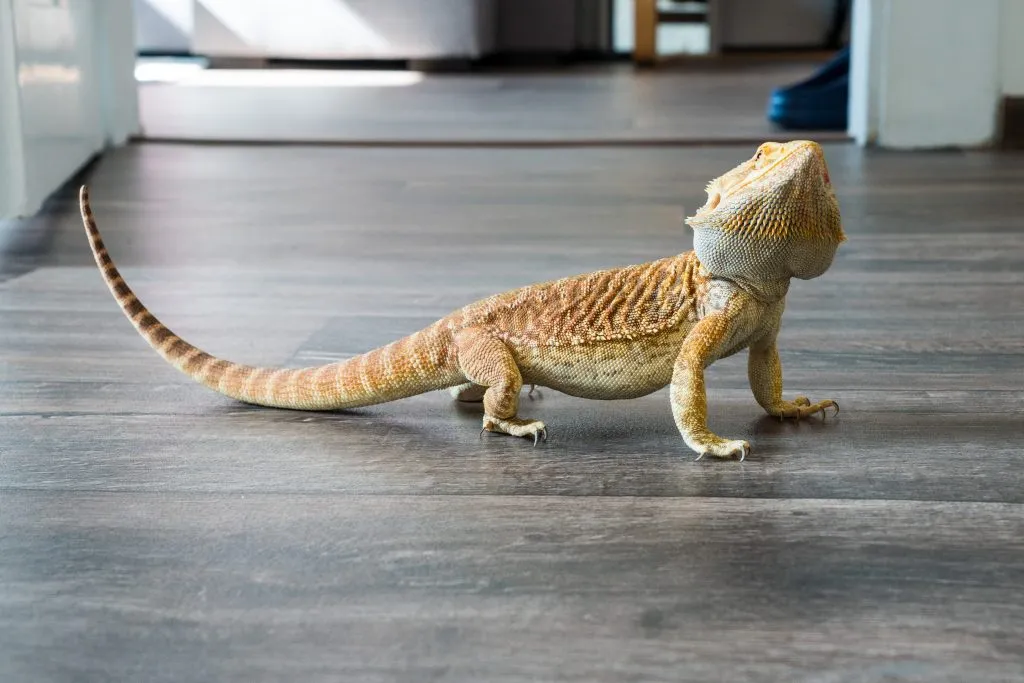
Bearded dragons are among the most favorite reptile pets in the US, thanks to their modest demands and outgoing nature. Hatchlings will do fine in a
Since these lizards are typically 24 inches (61 cm) long, you can consider a more sizable, wide model of up to 75 gallons.
Remember that exceptionally large dragons can’t spend happy and healthy lives in terrariums under 120 gallons, measuring 48 by 24 by 24 inches (122 x 61 x 61 cm).
Tip: If you would like to get a bearded dragon and need info on how to care for them , read our bearded dragon care guide here!
7. Blue Tongue Skink
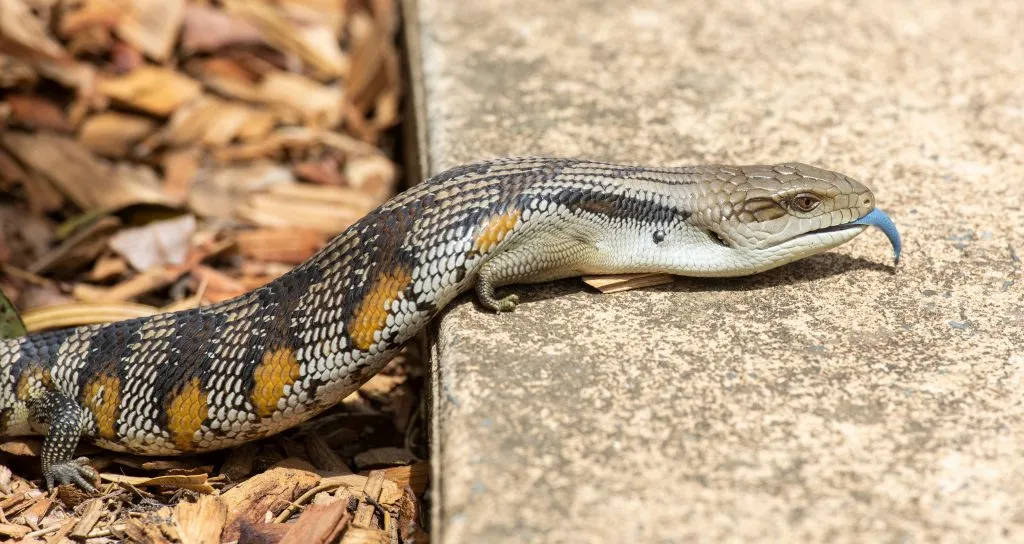
Docile Blue Tongue Skinks spend most of their time basking and require only basic maintenance. You should provide a 20-gallon
Since they typically grow up to 20 inches (51 cm), you should consider a horizontal
Tip: We recommend getting a smaller blue tongue skink species for a 55-gallon
tank . We show you how big each species gets in this article here. Also, for more info on blue tongue skinks, read our blue tongue skink care guide!
8. Ball Python (Python regius)
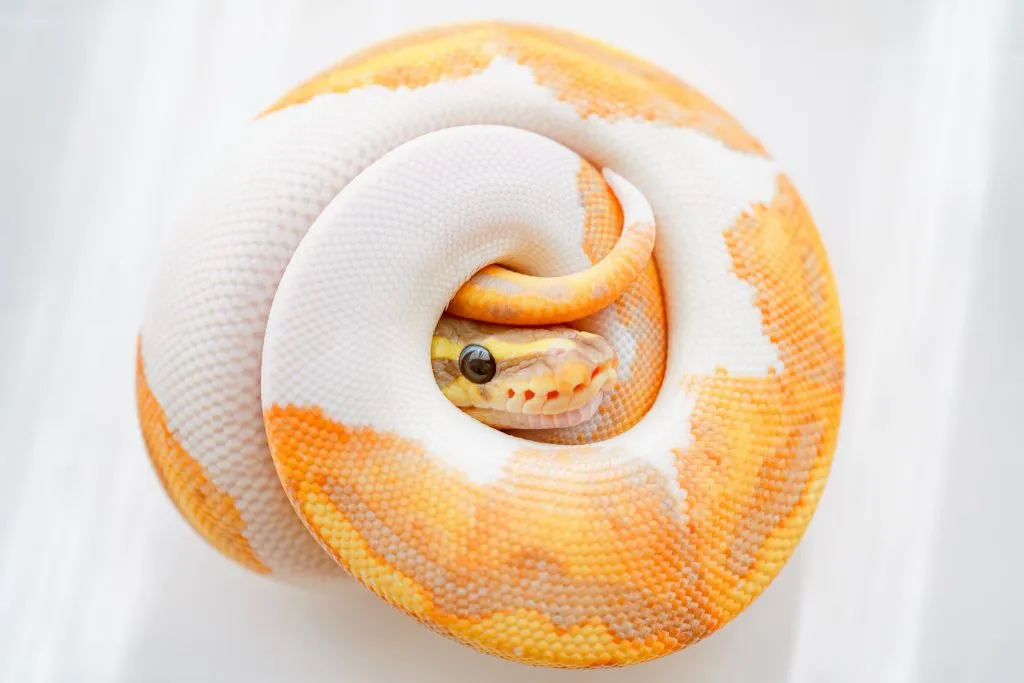
Ball pythons are probably the most popular snake pets in the US. Even though they spend most of the time curled into a tight ball, they need a spacey
Unlike established opinion, snake length doesn’t depend on the tank size but on the climate and proper diet.
You can expect it to reach its natural size despite a tiny space, and the only way to prevent stress is to increase the terrarium size as your pet grows.
Hatchlings will feel secure and protected in a terrarium of 10 to 20 gallons, but juveniles under 36 inches (91.5 cm) require a 40-gallon
Since adults need more space, you need to change their enclosure once again and provide a wide terrarium of 55 gallons.
Tip: If you want to learn more about ball pythons, have a look at our ball python care guide here!
9. Corn Snake (Pantherophis guttatus)

Tolerant, docile, and beautiful Corn snakes are excellent pets, even for inexperienced owners. Since they live approximately 20 years, you should be careful while looking for an ideal
Juveniles are happy with a terrarium of 10 gallons, but they will double in size by age three.
By then, you should buy a horizontal
- Eastern Rat Snake: Nature’s Pest Control and Fascinating Reptile - September 20, 2024
- Eastern Racer: The Fast and Agile Snake - September 19, 2024
- The Eastern Indigo Snake: The Majestic, Non-Venomous Hunter of the Southeast - September 18, 2024
